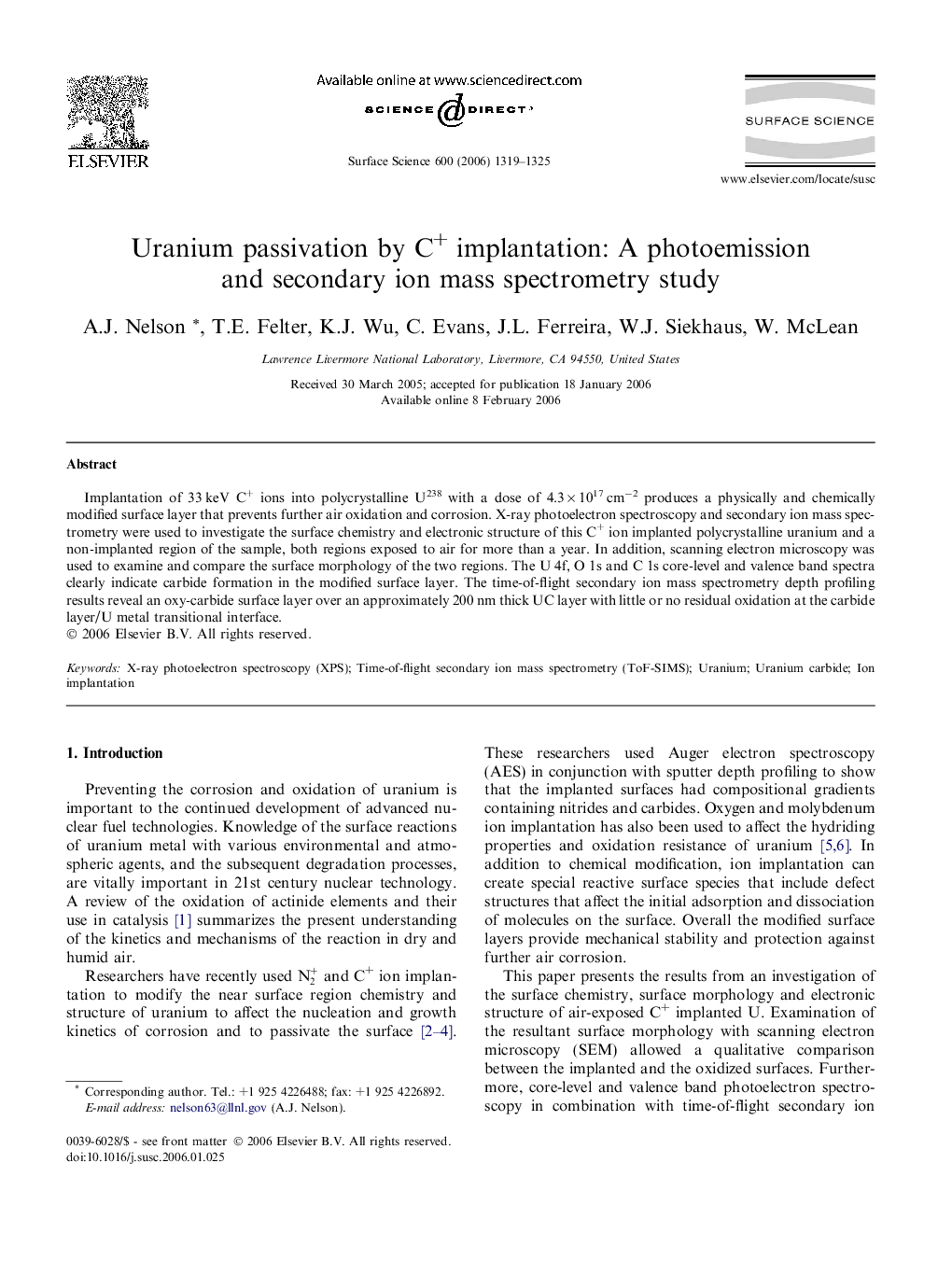| Article ID | Journal | Published Year | Pages | File Type |
|---|---|---|---|---|
| 5426796 | Surface Science | 2006 | 7 Pages |
Implantation of 33Â keV C+ ions into polycrystalline U238 with a dose of 4.3Â ÃÂ 1017Â cmâ2 produces a physically and chemically modified surface layer that prevents further air oxidation and corrosion. X-ray photoelectron spectroscopy and secondary ion mass spectrometry were used to investigate the surface chemistry and electronic structure of this C+ ion implanted polycrystalline uranium and a non-implanted region of the sample, both regions exposed to air for more than a year. In addition, scanning electron microscopy was used to examine and compare the surface morphology of the two regions. The U 4f, O 1s and C 1s core-level and valence band spectra clearly indicate carbide formation in the modified surface layer. The time-of-flight secondary ion mass spectrometry depth profiling results reveal an oxy-carbide surface layer over an approximately 200Â nm thick UC layer with little or no residual oxidation at the carbide layer/U metal transitional interface.
